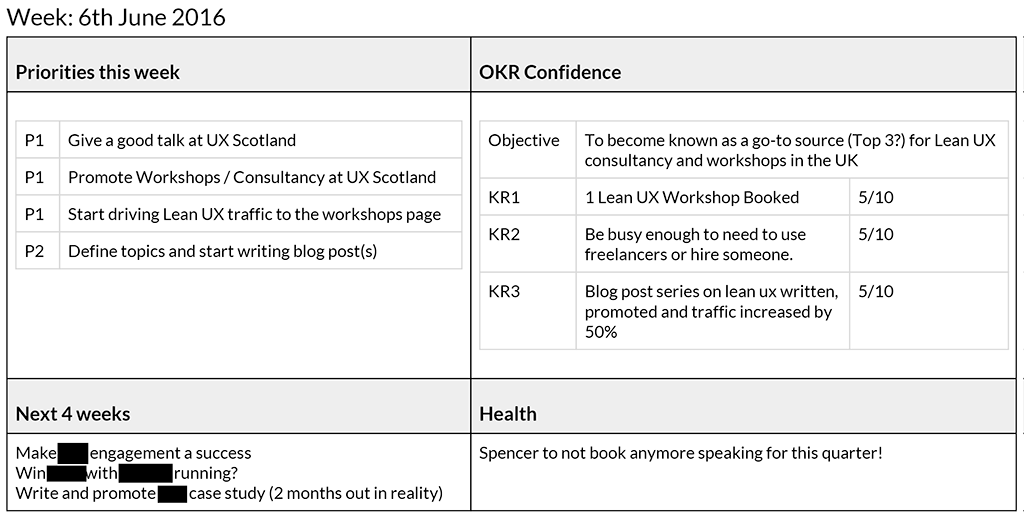In the previous blog post we looked at the reasons large organisations are struggling to implement Lean UX successfully.
In this post, I'd like to share my number one approach to improve our situation today.
Outcomes
If you don't read any further and only take one thing away let it be this: Focus on outcomes, first.

Pretty much every project I've seen fail has started off with poorly expressed outcomes or no defined outcomes at all.
A project without a clear goal is like a rudderless boat...It'll go somewhere, but that'll be wherever the wind and the tides take you.
Without clear, coherent, achieveable goals, we don't know what success looks like, so delivering it is virtually impossible.
Outcomes set destination for the project.
This is key for me. Outcomes set the destination for the project.
A destination (outcome) is not a route.
The most performant teams I've worked in or with understand the desired destination and are emopowered to figure out the best route to get there.
Understanding the desired outcome (destination) allows us to head towards that and measure if we're getting nearer.
A route is flexible.
The route will almost certainly have to change as we learn of obstacles we couldn't predict. Similarly, our measurements will change as we learn more about our route.
Outcomes need to be measurable
An outcome needs a clear and measurable definition of success. There are many ways to shape this, and I'd suggest you try the one that you think will chime most strongly with your organisation.
What we need to know is:
What are the businesses goals? Are they measurable?
SMART Goals
This is a favourite of mine, as it really helps walk through the things that need to be clarified and agreed. If an outcome can't be expressed to meet these criteria it's ususally not actionable and needs revisiting.
I tend to use these definitions for the acronym.
- Specific
- Measurable
- Attainable/Achievable
- Relevant
- Timely
However these are muddy waters and so I suggest you state which definitions you are using - ideally on a slide or handout whilst you're undertaking the activity.
OKRs
I recently read Radical Focus by Christia Wodtke. It's a light, entertaining read, with a great narrative. In it she explains the idea of OKRs. OKRs seem to me to build on the idea of smart goals, merging them with agile 'checkins' and 'celebrations' to introduce a shorter, focused cadence.
So what are OKRs?
OKRs are an Objective[O] with measureable Key Results[KR]. These are best expressed at a company level, to drive a cohesive direction, but could also be expressed more specifically at a departmental level. They are usually based on a 3 month period.
Each week, you have a check-in at the beginning of the week and a celebration at the end. (example below)
To keep our information visible, a simple format is used - and it's a quadrant!
The top right quadrant
Contains our objective, the key results associated with it and our confidence of achieving them within a 3 month period.
In the example below our objective is 'To become known as a go-to source [Top 3] for Lean UX consultancy and workshops in the UK'
We'll measure our success against the three Key Results, which are initially marked 5/10 each. the 5 out of 10 indicates likelyhood of succeeding and should always start as 50.50, otherwise you're not pushing yourself enough. (You should set your Key Results to be stretch goals.)
The top left quadrant
Contains this week's ordered priority activities.
The bottom right quadrant
This is Organisational Health. I love this idea. It's a little confusing in our example, as I wasn't to book anyomre speaking engagements (I was overloaded). Please don't misinterpret this as personal health (which is obviously important!), whilst this seemingly involved personal health, it was more around business capacity.
A more clearly business related example might be "We cannot increase productivity in ways that undermine our core values. (e.g. No sweatshops)" or "We must keep our existing customers happy as we grow our customer aquisition"
The bottom left quadrant
Here we surface relevant things that are on the horizon (next four weeks). These can be anything that's relevant and shouldn't be forgotten e.g. events, upcoming work or things that will need doing.

From my reading of the book, I feel this approach may be more ease to embed at a company with a start-up mentality, but I feel it'd be particularly valuable in large organisations. Given this from wikipedia:
"OKRs were invented at Intel. OKRs are used today by many companies, including Uber, Google, LinkedIn, Twitter and Zynga."
...it should be doable. That being said most of these companies are 'startup-ish' in mentality and I've not yet personally tried to introduce OKRs to a large organisation, so we'll see!
You can watch Christia Wodtke explain ORKs here: “The Executioner’s Tale” Christina Wodtke-Interaction14
Push back if they're not defined.
I believe it's our job to help guide our organisations to success, and I genuinely belive outcome are the genesis of success, if you find they're not defined, or unclear - push back! Politely question the outcomes, organise a workshop, do what you need to do to get them clarified. Everyone will benefit in the long run.
Life is change - Revisit your outcomes
Life, business, the world - everything really aren't static – they're constantly changing. I'd suggest revisting your outcomes quarterly to review if they are still current. In lean terms should we 'Persevere, Pivot or Kill'?
Maybe by now you're thinking, "that's all well and good, but I can't get our leaders to think about outcomes." in the next post in this series we'll look at how you can Extend your remit.